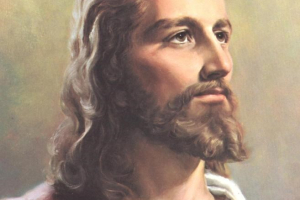A particular illustration of Jesus' face has surfaced on the internet and is attracting quite a bit of traffic and comments. Richard Neave, a medical artist retired from the University of Manchester in England, drew the "real" face of Jesus, based on a skeletal discovery from British scientists, assisted by Israeli archaeologists. This image is now believed to be the most accurate image of the most famous face in human history, differing significantly from the traditional depictions of Jesus in Renaissance art.

A traditional image of Jesus Christ.
Neave drew the face of what a first-century Jewish man's features would look like: a man with short hair, muscular build and tan skin.
Using the powers of science, Neave found three skulls from Israeli archaeological sites and used computerized tomography to construct the best shape of Jesus' face, according to a MissOpen article. From his findings, Neave created a dark-skinned Jesus, with a much broader face and nose, and a different hair style.
Neave is an expert in forensic facial reconstruction. His skills have been used to recreate faces from skulls in forensic police work, and in producing images of historical figures. One of his reconstructions was of a prehistoric bog body known as Yde Girl.
On social media Monday morning, Matthew Kilburn said, "Jesus certainly wasn't Nordic-looking. But nor was he "Black." He most likely shared the skin tone of those of his community. If you pull up pictures of Palestinian men today, you'll find a skin tone much closer to "white" than to "black", but most accurately described as "tan" or "olive".
Kilburn also proposed that people now can't tell how someone wore their hair by analyzing the skulls of people of their time and place. "But if you look at the Shroud of Turin, it clearly shows a figure with long hair."
He said every culture has a tendency to draw Christ in its own image. "Somehow it only draws ire when Whites do it." 2001, the television program "Son of God" first used one of three first-century Jewish skulls from a leading department of forensic science in Israel to depict Jesus in a new way.



















